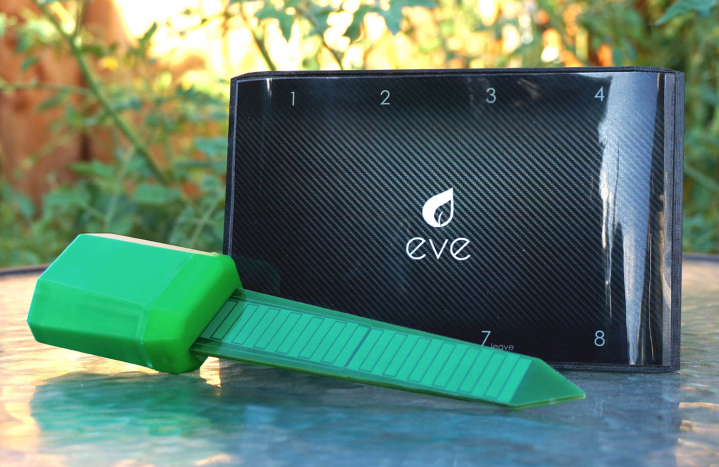
Now that this whole Internet of Things zeitgeist has really stated to take hold, sensors and other connected gizmos have become fairly common household items. But as the space becomes increasingly crowded, smart devices are starting to move outside the walls of your home. More and more, they’re pushing outward and taking over your lawn and garden.
Case in point: Eve — the latest entrant into the growing category of smart irrigation systems. We’ve definitely seen this kind of contraption in the past, but that’s not to say that Plaid Systems, the company behind the device, doesn’t bring anything new to the table. It’s quite the contrary, actually.
The other systems we’ve seen, such as Lono and Rachio, rely solely on their Internet-connected brains to determine the best time to water your yard. They tap into weather stations and geological databases to figure out stuff like what kind of soil you’re sitting on, or when a storm is about to roll through. This information is fairly accurate, and can definitely help you save some money on your water bill, but it’s also not particularly precise.
Related: Iro smart sprinkler system hits shelves in Home Depot

With the help of the connected Adam sensors, Eve knows precisely when to water your yard and exactly how much water to give it. If a rainstorm just passed over, for example, the moisture sensors will recognize the moisture change and intelligently adjust your watering schedule accordingly. If it’s too hot out, the system might hold off and move the watering time to later in the evening when there’s a lower chance of water loss due to evaporation.
And to top it all off, Eve’s creators built the system to be compatible with Smart Things — an ecosystem of connected devices that was recently acquired by Samsung for $200M. Ostensibly, this means that the system will be able to interact with other smart home devices right out of the box.
Eve isn’t quite available for purchase just yet, but its creators have turned to Kickstarter to raise funds for the first full-scale production run. If you back the project now, you can lock down the Eve controller for $150, whereas each individual Adam sensor will put you back another $50. You’ll also need to have a Smart Things hub connected to your network in order for everything to work, which raises the cost of entry another $100. All in all, the upstart costs are definitely a bit on the steep side, but when you consider how much this system could save you on your water bill, it starts to look much more reasonable.
Editors' Recommendations
- What to know before connecting the Roborock S8 MaxV Ultra to your drainage system
- Go smart or go home: Amazon’s Echo Show 8 smart display is $50 off
- Home Depot’s Hubspace is a great way to start building your smart home
- Echo Hub vs. Echo Show 8: Which is the best option for your smart home?
- The best smart light switch for Alexa, Google Home, and HomeKit




